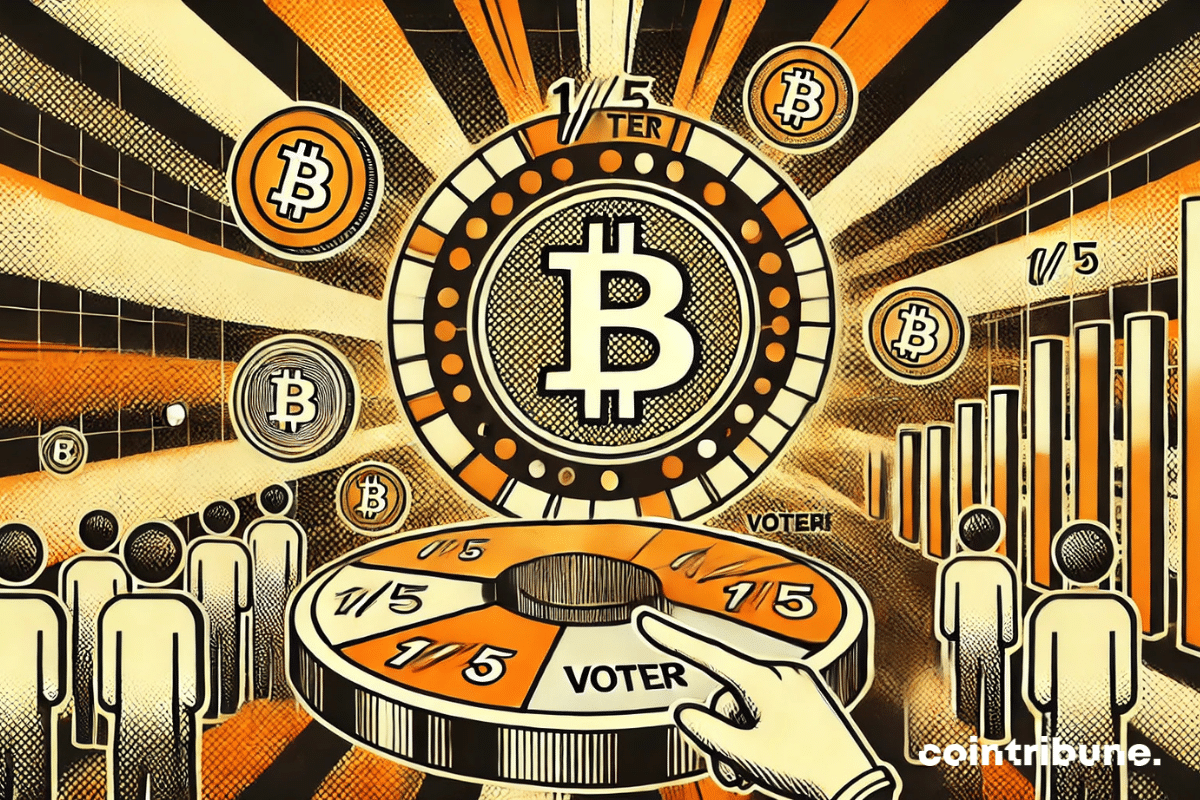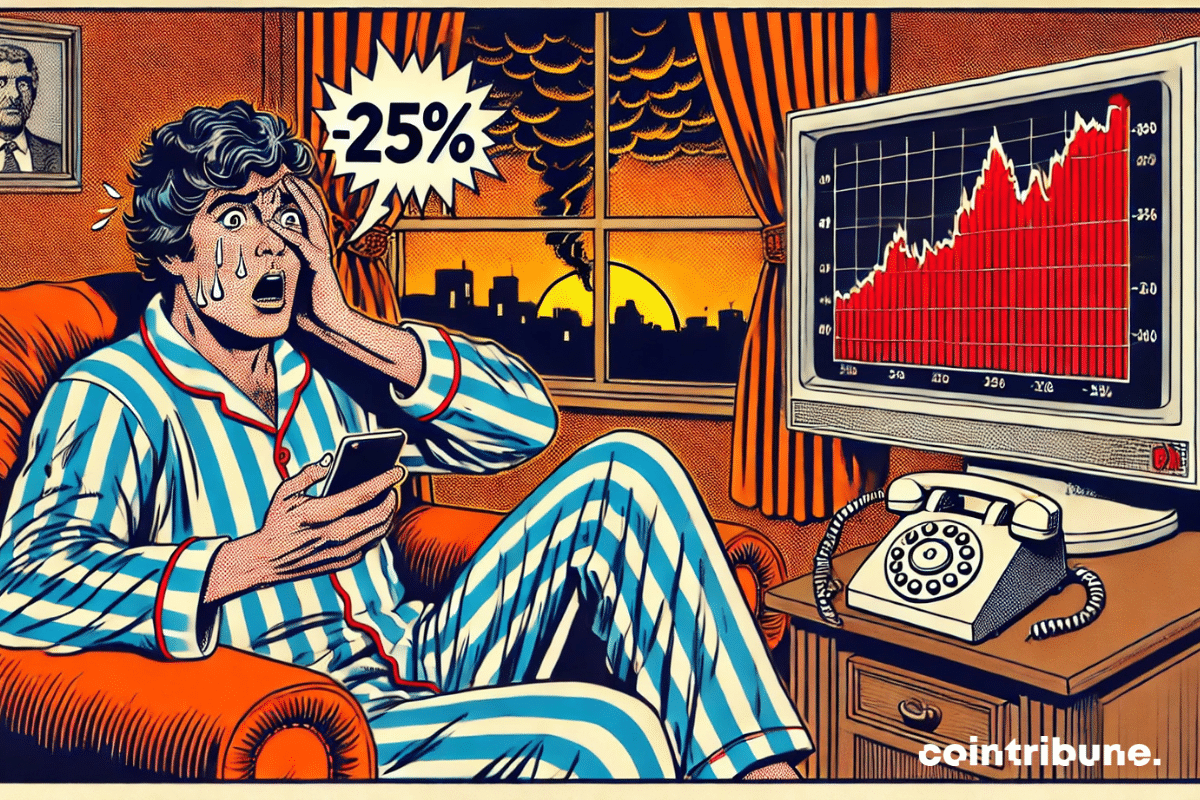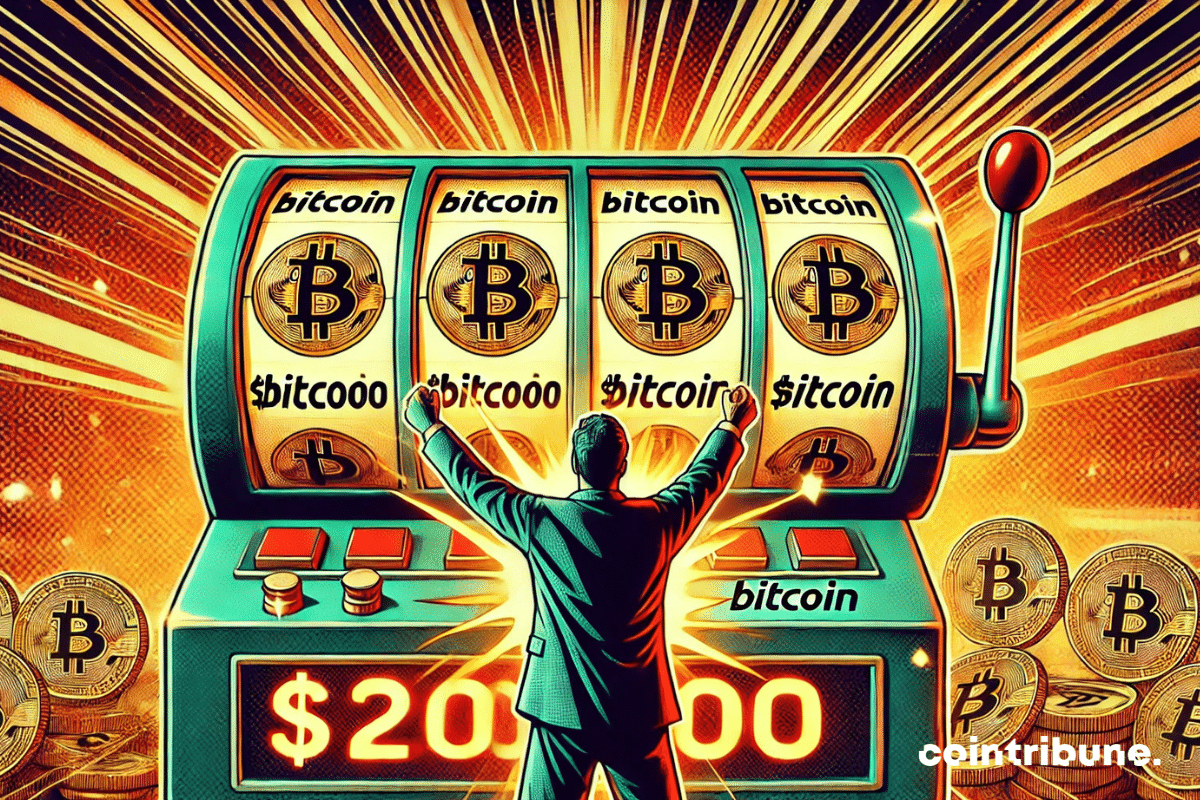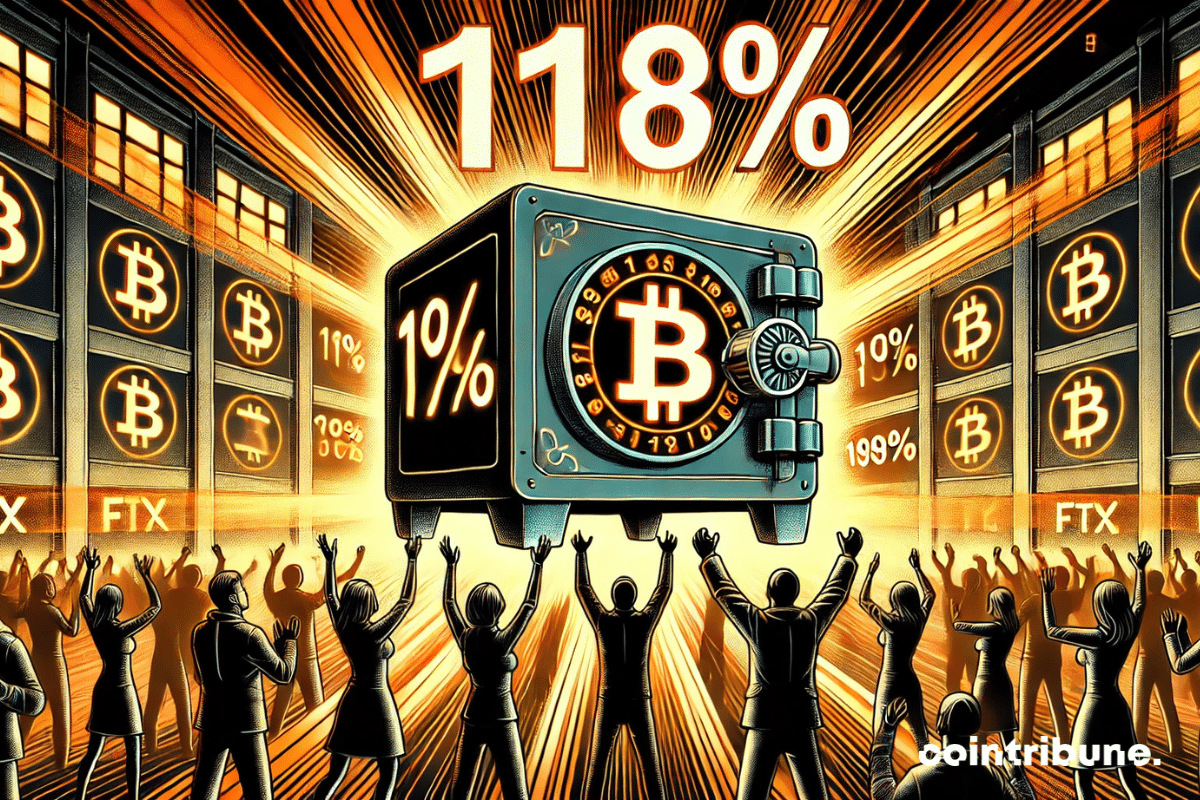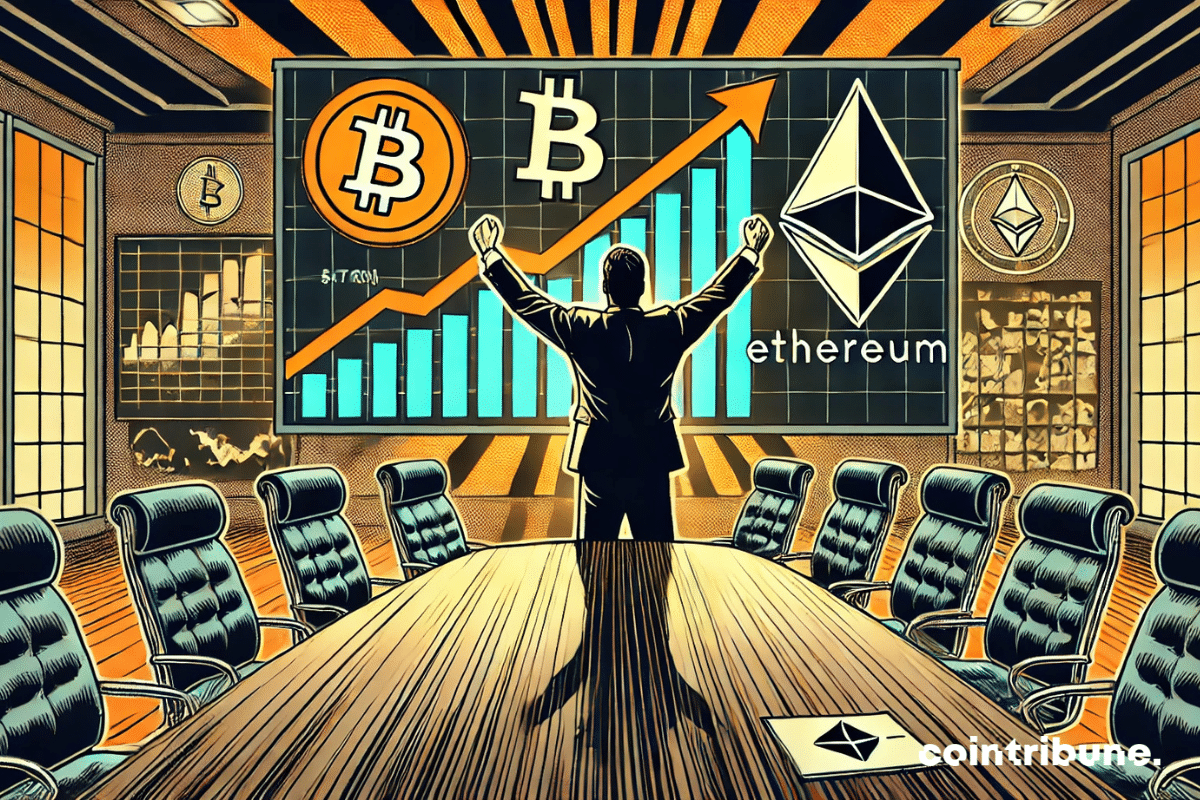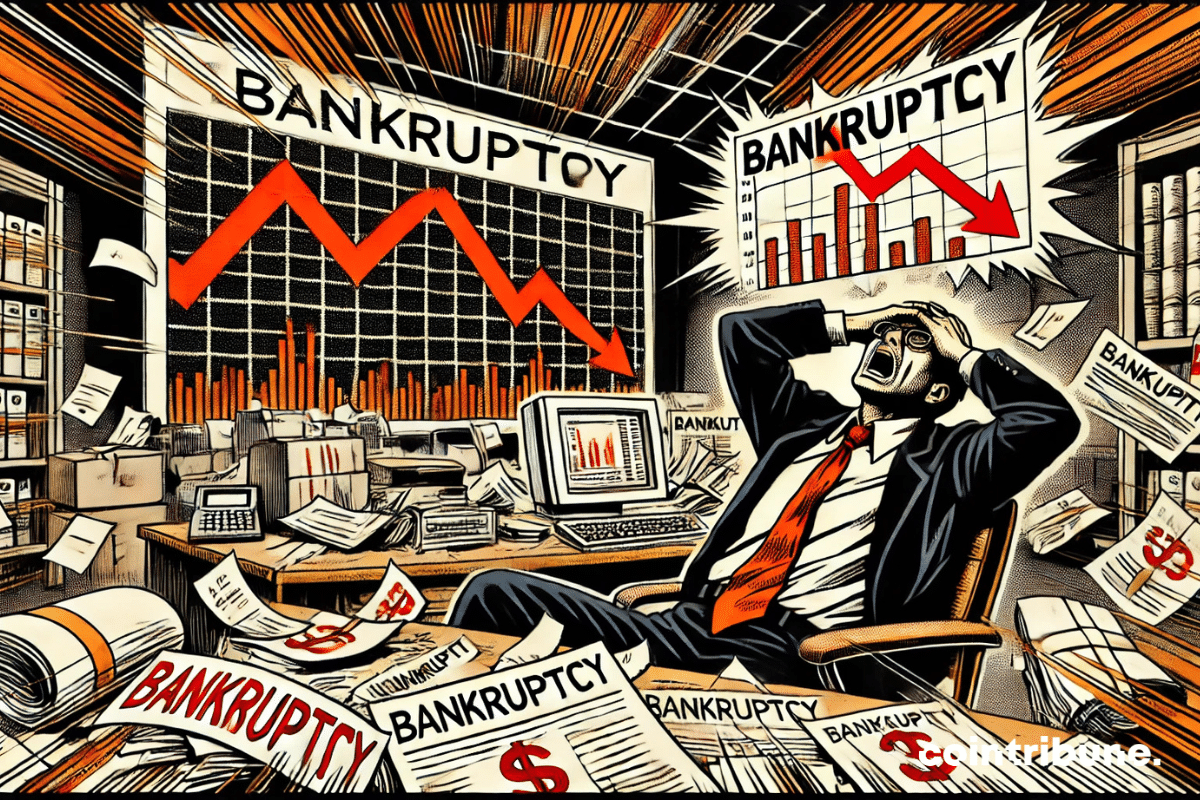The French real estate market is going through a turbulent period, despite signs of calm after two marked years of depression. Indeed, the figures recently published by the Notaries of France reveal a double observation: real estate prices have dropped, but this decrease has not been enough to revive sales. Thus, in 2024, the number of transactions has seen a spectacular drop, illustrating a deep blockage in the sector. This situation, both paradoxical and alarming, raises questions about the factors that are hindering the market's revival and the economic and political dynamics that amplify its complexity.
Home » Archives for Luc Jose Adjinacou » Page 28
Luc Jose A.
Diplômé de Sciences Po Toulouse et titulaire d'une certification consultant blockchain délivrée par Alyra, j'ai rejoint l'aventure Cointribune en 2019. Convaincu du potentiel de la blockchain pour transformer de nombreux secteurs de l'économie, j'ai pris l'engagement de sensibiliser et d'informer le grand public sur cet écosystème en constante évolution. Mon objectif est de permettre à chacun de mieux comprendre la blockchain et de saisir les opportunités qu'elle offre. Je m'efforce chaque jour de fournir une analyse objective de l'actualité, de décrypter les tendances du marché, de relayer les dernières innovations technologiques et de mettre en perspective les enjeux économiques et sociétaux de cette révolution en marche.
The use of cryptocurrencies has surpassed the stage of curiosity reserved for a tech-savvy elite. A recent survey from Emerson College reveals that nearly 19% of American voters have already invested in cryptocurrencies, traded, or conducted transactions with them. This figure, which illustrates a growing adoption of these technologies, represents a significant change in financial behaviors. More than an isolated phenomenon, it reflects a profound transformation in mindsets, where cryptocurrencies are gradually becoming integrated into the daily lives of millions of people.
The crypto market is going through a period of high volatility, marked by a drop in the price of Bitcoin, now valued at $100,300. This unexpected plunge for many investors comes in the wake of the recent announcements from the U.S. Federal Reserve. While the 0.25% reduction in the federal funds rate appeared to align with expectations, the upward revision of inflation forecasts for 2025, now set at 2.5% from 2.1% previously, took the markets by surprise. In his speech, Jerome Powell, the Fed chair, emphasized that these adjustments reflect a cautious approach in the face of current economic challenges. These decisions have triggered shockwaves in the financial markets, increasing uncertainties and sparking a debate on the potential implications for crypto investors.
The world of crypto is buzzing with activity. Recent projections around Bitcoin continue to capture the attention of investors and financial institutions. An analysis published by Bitfinex estimates that Bitcoin could reach $200,000 by mid-2025, a scenario fueled by massive institutional flows and ever-growing global adoption. This forecast is based on deep dynamics, particularly the enthusiasm for Bitcoin ETFs and increased institutional demand, which reinforce the crypto's position as a strategic asset. Furthermore, these anticipations are set against a backdrop where Bitcoin is undergoing major transformations, revealing a market in search of stability and maturity. Far from being limited to a simple price increase, this trajectory could redefine the fundamentals of a sector that gains legitimacy and global influence every day.
The global economic landscape is at a critical phase. Every decision by the Federal Reserve (Fed) becomes a key signal, closely monitored by investors and financial analysts. In this context, the imminent announcement of a new interest rate cut sparks keen interest. As inflation, once rampant, begins to return to more controlled levels, the Fed is considering reducing its benchmark rate once again, this time to a range of 4.25% to 4.5%. This measure, which is part of an economic stabilization strategy, leaves no market indifferent. For cryptocurrencies, this announcement fuels both hope for a more favorable monetary environment and fear of increased instability. As Bitcoin and Ethereum already face significant declines, investors question the prospects ahead.
December is shaping up to be a pivotal month for the crypto market, particularly for altcoins, which may experience significant movements. As important U.S. economic decisions approach, investors are closely monitoring macroeconomic and on-chain indicators to anticipate upcoming trends.
The crypto market is going through a period of strong turbulence, where price fluctuations are testing investors' confidence. Indeed, at the heart of this uncertain dynamic, Solana (SOL) stands out as one of the most watched assets. Currently, a major reorganization has taken place in the structure of its holders, revealing a significant transfer of tokens from long-term old investors to new entrants. According to on-chain data, this redistribution reflects profit-taking by historical investors, marking the end of a previous bullish cycle. In parallel, a new generation of investors shows marked optimism, betting on Solana's potential to rebound despite a volatile context. This transition reflects divergent perspectives for the future of the project: on one hand, a renewed confidence driven by newcomers; on the other, increased caution fueled by technical challenges and upcoming uncertainties.
The bankruptcy of FTX has been a real earthquake in the history of the cryptosphere. It has deeply shaken investor confidence and revealed significant structural flaws within the industry. Nearly two years after its collapse in November 2022, the bankrupt exchange is back in the spotlight with an ambitious reorganization plan, recently validated by the American judiciary. This plan includes an unprecedented repayment to creditors, which will begin on January 3, 2025, with a promise of restitution of up to 118% of the declared debts. To orchestrate this operation, FTX relies on well-known players in the sector. Kraken, experienced in such procedures after having played a key role in managing the Mt. Gox case, and BitGo, an expert in secure crypto custody, have been chosen to handle the repayments. Their involvement offers both security and transparency, two essential values to regain the trust of the creditors and ease the persistent tensions.
The sector of crypto related to artificial intelligence is experiencing rapid growth in 2024. After a chaotic period marked by high volatility and geopolitical challenges such as U.S. restrictions on AI chip exports to China, the market has regained new momentum. This spectacular recovery has resulted in a 208% growth over the year, propelling the total market capitalization of the sector to $61.5 billion. Several dynamics are at play behind this remarkable rebound. On one hand, the increasing adoption of blockchain solutions powered by artificial intelligence has bolstered the credibility of these technologies. On the other hand, the heightened demand for utility tokens that can support expanding ecosystems in areas such as gaming, entertainment, and decentralized services has solidified this trend.
The European economy is going through a period of instability where geopolitical tensions are intertwined with a significant slowdown in growth. In this uncertain context, the European Central Bank (ECB) is faced with a major challenge: to reconcile the need to contain inflation with the urgency of revitalizing a weakened economy. To address these issues, the institution led by Christine Lagarde announced a new reduction in its key interest rate, lowered by 25 basis points to 3%. This decision, the third of its kind in six months, reflects a gradual and cautious approach. However, this choice triggers criticism. While some praise the continuity of this policy, others point out a lack of boldness, and even argue that more ambitious measures would be necessary to stimulate consumption and investment.
The crypto market is undergoing a major transformation, driven by the growing interest from institutional investors. Among the key players in this revolution, BlackRock stands out through the development of financial products specific to Bitcoin and Ethereum, the two most emblematic assets. According to Jay Jacobs, head of ETFs at the company, the funds dedicated to these cryptos still represent a largely untapped potential. With the assertion that current demand is just "the tip of the iceberg," he indicates that institutional adoption is still in the emerging phase. With assets under management already exceeding $54 billion for the Bitcoin fund (IBIT) and nearly $4 billion for the Ethereum fund (ETHA), these figures reflect the scale of a phenomenon poised to redefine investment strategies on a global scale.
A major move could redefine the outlook for Ethereum as the crypto market undergoes a consolidation phase. On December 14, an exceptional transaction of 418 million dollars, equivalent to 108,521 ETH, was recorded. This withdrawal, the largest seen since March, was made directly from exchanges, a decision that catches the attention of analysts and investors. Such a significant reduction in available assets on exchanges hints at a change in approach among Ethereum holders, who now seem to favor a long-term holding strategy. With the decrease in selling pressure, this move bolsters the assumption of a forthcoming price increase, fueled by positive technical signals. As Ethereum approaches key resistance zones, speculation about a return to the peaks reached in 2021 is growing.
Amid revolutionary announcements, technological advancements, and regulatory turbulence, the crypto ecosystem continues to prove that it is both a realm of limitless innovations and a battleground for regulatory and economic conflicts. Here is a summary of the most significant news from the past week regarding Bitcoin, Ethereum, Binance, Solana, and Ripple.
An unprecedented crisis is shaking the global economy today: large companies, often seen as pillars of stability, are faltering under the weight of record failures. In the third quarter of 2024, 127 companies, each reporting revenues exceeding 50 million euros, declared bankruptcy. This statistic far exceeds the averages observed before the pandemic, revealing a critical acceleration of economic vulnerabilities. Such a phenomenon is set against a backdrop marked by the aftereffects of the health crisis and a rapid rise in interest rates, two factors that have put significant strain on companies' cash flows. At the same time, the end of the support measures put in place during Covid-19 has exposed many companies to increased costs and unavoidable restructuring. These failures, particularly concentrated in Europe, raise questions about the structural limits of certain sectors and the ability of companies to face a rapidly changing economic environment.
Since its rapid rise on the crypto scene as an iconic memecoin, Shiba Inu (SHIB) has established itself as a key player in this universe. This token, often seen as a lucrative opportunity by investors, seemed until now to capitalize on the enthusiasm of its community. However, the recent drop in its price constitutes an unexpected event. After reaching a spectacular peak, SHIB is undergoing a correction phase that raises questions about its long-term viability. Thus, the current situation highlights the fragility of market dynamics surrounding community tokens and prompts reflection on the challenges facing the Shiba Inu ecosystem, despite the unwavering support of its followers.

